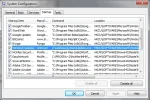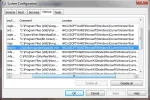guyzsmarty
Well-Known Member
- Joined
- Feb 11, 2010
- Messages
- 6
- Thread Author
- #1
Hi,
I don't remember when this started, but whenever I boot my laptop it asks for my permission to run update.exe just after the start-up. When i click on Yes to allow it, it shows the following error message:
But when I click on No, nothing happens.
It happens so every time I boot my laptop,
Below is the information about my laptop:
I am a newbie to these technical terms. Please help me to get rid of this Update.exe.
Is it a malware? or, a normal application to update windows? How can I be sure if it is a malware or not? and if yes, how can I remove it?
Assuming that to be a malware, I tried to run a number of protection softwares like Microsoft Malicious Software Removal Tool, A-squared anti-malware, Solo technology anti-malware, Mcafee Virus Scan etc. but in vain.
Also, I think I should write it too here. When I allow the Update.exe to run initially after start-up, I can see the process running in Task Manager. When I try to see the file location of this process, it shows the location as "C:\Windows\system\update.exe" (Not C:\Windows\System32 though I have both folders viz system and System32 in Windows folder),but C:\Windows\system is an empty folder in my laptop.
So, I do not know where to find this application so as to delete it.
Please help me.
I don't remember when this started, but whenever I boot my laptop it asks for my permission to run update.exe just after the start-up. When i click on Yes to allow it, it shows the following error message:
"Run-time error 339: Component 'MSWINSCK.OCX' or one of its dependencies not correctly registerd: a file is missing or invalid."
But when I click on No, nothing happens.
It happens so every time I boot my laptop,
Below is the information about my laptop:
Dell Studio XPS 1640
Windows 7 operating system
Mcafee Antivirus software
Windows 7 operating system
Mcafee Antivirus software
I am a newbie to these technical terms. Please help me to get rid of this Update.exe.
Is it a malware? or, a normal application to update windows? How can I be sure if it is a malware or not? and if yes, how can I remove it?
Assuming that to be a malware, I tried to run a number of protection softwares like Microsoft Malicious Software Removal Tool, A-squared anti-malware, Solo technology anti-malware, Mcafee Virus Scan etc. but in vain.
Also, I think I should write it too here. When I allow the Update.exe to run initially after start-up, I can see the process running in Task Manager. When I try to see the file location of this process, it shows the location as "C:\Windows\system\update.exe" (Not C:\Windows\System32 though I have both folders viz system and System32 in Windows folder),but C:\Windows\system is an empty folder in my laptop.
So, I do not know where to find this application so as to delete it.
Please help me.

